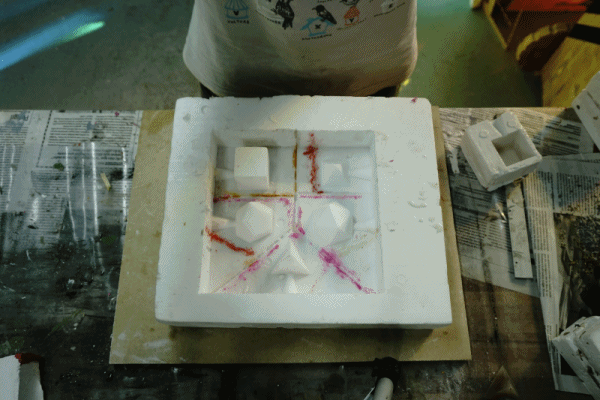
Assignment
* Design a 3D mold, machine it, and use it to cast parts.
Neil's class Summary
Design
It has been a while in my head circulating the idea of building miniatures of the five solid platonic to play while spending time on my desk. This week assignment is perfect to watch them be born! In addition, I see in them a possible inspiration for my
final project.
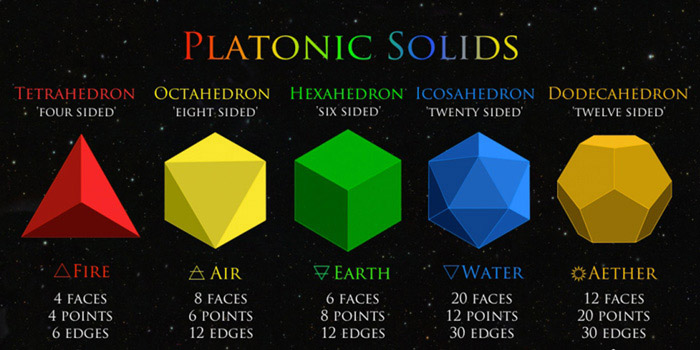 I built the three-dimensional models in Rhino following the instructions of this
link.
I built the three-dimensional models in Rhino following the instructions of this
link.
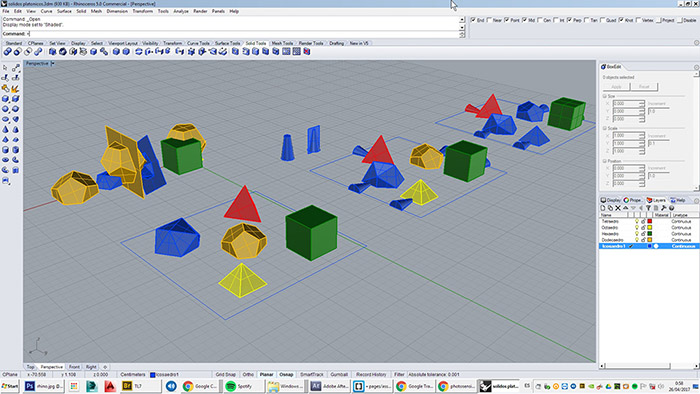 Here you can
download Rhino files.
Here you can
download Rhino files.
Machining
We will mill the positive master mold over some 50 mm thick sheets of Polyfan, a material made up of closed cells of expanded polystyrene, not very ecological but available free of charge in small pieces.
After setting up the cuts in our local ShopBot through Aspire I watched the process completely for an hour and a half. It is important to visually control that the tool does not melt the material during the process.
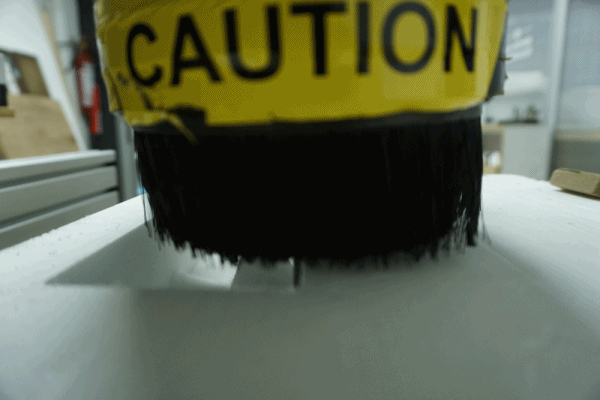 And here is the result.
And here is the result.
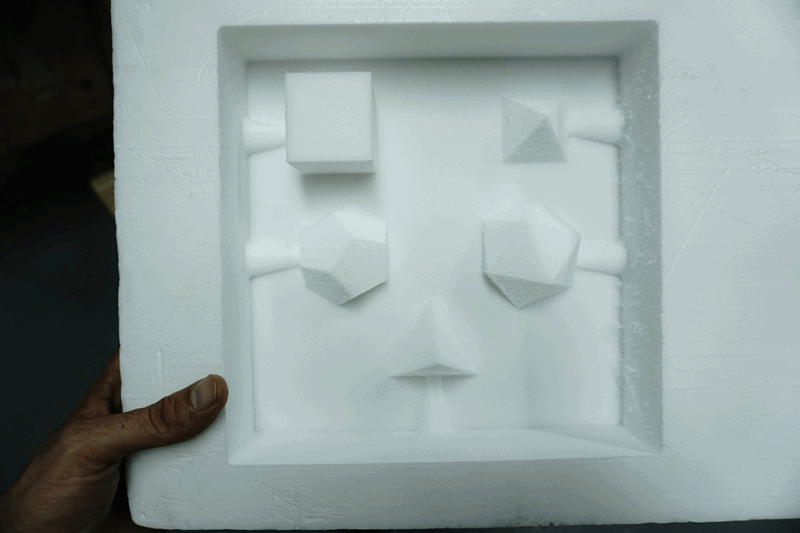
Molding
First learning: it is advisable to make the molds of the pieces separately and not all together, in order to have greater flexibility when working with them, in addition to reducing the use of silicone.
Instead of re-milling the master mold with the pieces separately, I decided to fix the existing one by adding hand-cut pieces of foam to reduce the volume of material to be used.
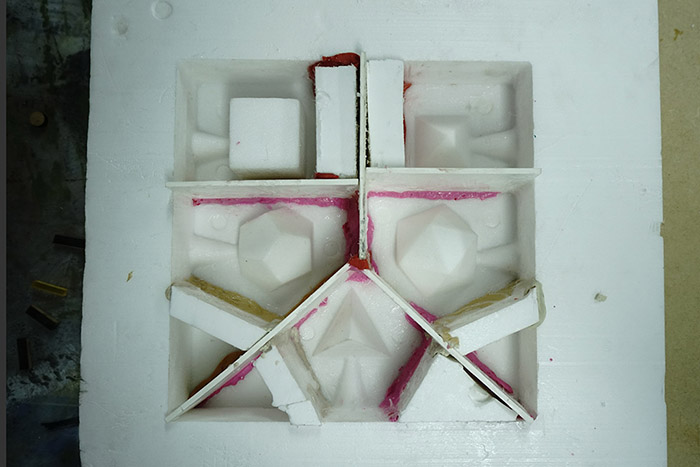 Second learning: The more accurate and careful we are in the early stages the pieces will need fewer final adjustments.
Second learning: The more accurate and careful we are in the early stages the pieces will need fewer final adjustments.
To make the negative molds I plan to make a first layer of silicone, in order to obtain greater detail on the surfaces of the final objects and then a final layer of plaster to add some robustness to the molds.
It is important to cover the surfaces with some kind of release agent, in our case we use vaseline. A very thin layer of this material will suffice, be careful! Too much use can cause undesirable shapes or textures in our object's mold.
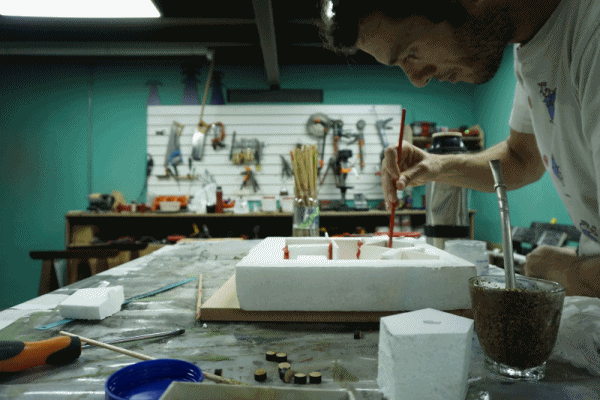 After calculating the amount of silicone to be used (400gr) and catalyst (20gr) we did a brief simulation to see if we had the safety, cleaning and operational precautions.
After calculating the amount of silicone to be used (400gr) and catalyst (20gr) we did a brief simulation to see if we had the safety, cleaning and operational precautions.
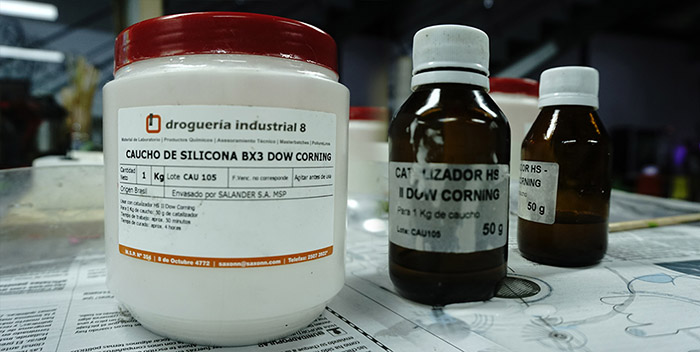 The catalysis process takes approximately 24hrs but after an hour and a half it can be seen that its shape no longer changes. During that period I carefully moved material from the excess areas towards the missing areas so as to cover the high areas of the objects.
The catalysis process takes approximately 24hrs but after an hour and a half it can be seen that its shape no longer changes. During that period I carefully moved material from the excess areas towards the missing areas so as to cover the high areas of the objects.
Four hours after the silicone process, plaster was inserted into the missing areas to stiffen the mold. Here's a brief video of the process.
Thanks Joaco, Mato and Nacho Rivero for the expertise and knowhow.
Casting
The primary material for the casting I will use will be DCPD unsaturated polyester resin from this vendor with the corresponding catalyst (Mek Peroxide). The ratio is 20 to 25 drops of catalyst for 100gr of resin.
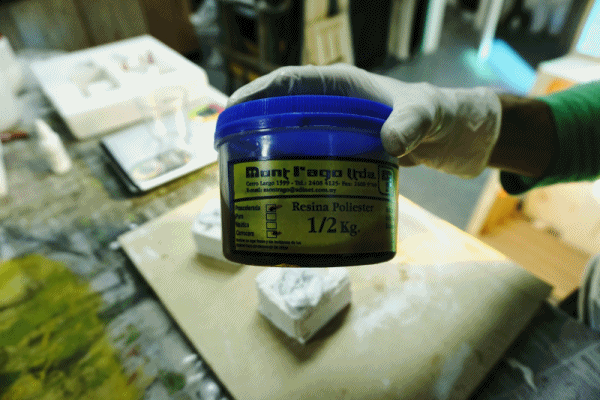 I did a couple of tests with this combination of materials.
I did a couple of tests with this combination of materials.
My goal is to combine this material with fine gravel and a bit of portland cement to obtain a more solid effect of the pieces. Here is the recipe i used.
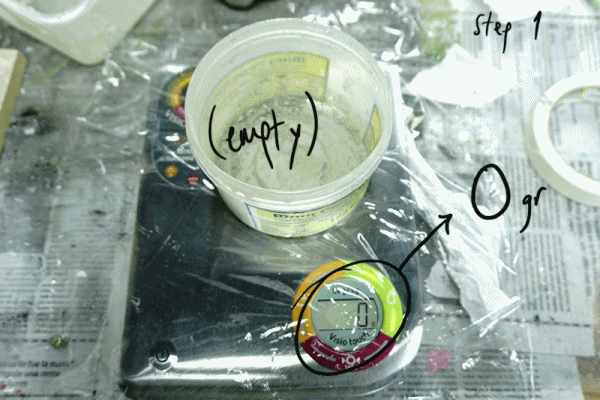 And this are the final results.
And this are the final results.
